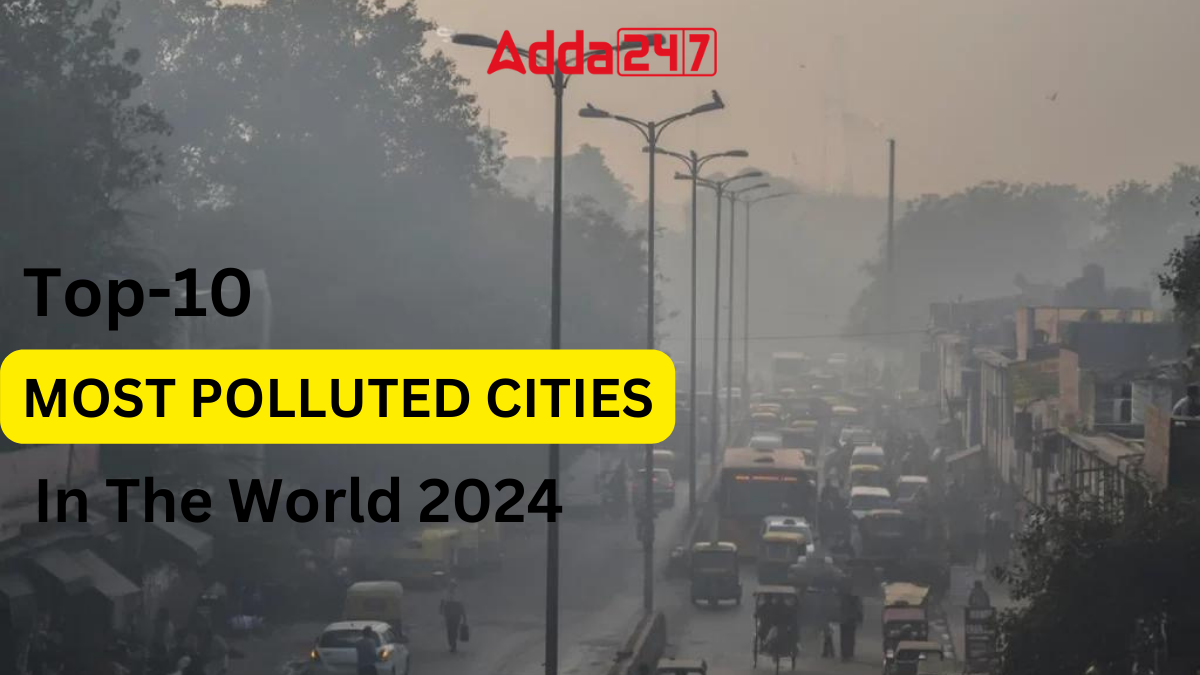As the world grapples with escalating environmental challenges, the specter of air pollution casts a long shadow over urban landscapes, impacting millions of lives and posing grave threats to public health. By March 2024, the latest data reveals a disturbing trend, with several cities bearing the brunt of dangerously high levels of pollution. Here, we unveil the top 10 most polluted cities in the world, shedding light on the severity of this pressing global issue.
World’s Most Polluted City 2024
In a concerning turn of events, Chiang Mai, Thailand, has earned the dubious distinction of being labeled the world’s most polluted city by March 2024, with an alarming Air Quality Index (AQI) of 198. This designation underscores the severity of the air pollution crisis gripping the region, casting a shadow over the once pristine cityscape. Urgent measures are imperative to address this pressing environmental issue and safeguard public health from the detrimental effects of toxic air.
Top-10 Most Polluted Cities in the World By March 2024
Chiang Mai of Thailand with an alarming Air Quality Index of 198, holds the distinction of being the most polluted city in the world 2024, followed by Kathmandu, Lahore, Delhi, and Dhaka.
Here is the list of top-10 most polluted cities in the world by March 2024:
| Most Polluted Cities in the World By March 2024 | |||
| Rank | City | Country | AIQ |
| 1. | Chiang Mai | Thailand | 198 |
| 2. | Kathmandu | Nepal | 180 |
| 3. | Lahore | Pakistan | 180 |
| 4. | Delhi | India | 179 |
| 5. | Dhaka | Bangladesh | 161 |
| 6. | Kinshasa | Democratic Republic of the Congo | 156 |
| 7. | Mumbai | India | 155 |
| 8. | Dakar | Senegal | 153 |
| 9. | Incheon | South Korea | 146 |
| 10. | Kampala | Uganda | 144 |
What is Air Quality Index?
The Air Quality Index (AQI) serves as a vital tool devised by government agencies to inform the public about the current or predicted level of air pollution. It indicates the extent of pollution in the air and the associated health risks. Particularly vulnerable groups like children, the elderly, and those with respiratory or cardiovascular issues are most susceptible to the adverse effects of poor air quality. During periods of high AQI, authorities advise limiting outdoor activities and recommend the use of protective measures such as masks and air purifiers to mitigate health risks, especially during events like wildfires.
Parameters of AQI
The AQI is divided into the following parameters, each associated with specific health impacts:
| AQI | Quality of Air | Description |
| 0-50 | Good | Air quality is satisfactory. |
| 51-100 | Satisfactory | Air quality may cause minor discomfort to sensitive individuals. |
| 101-200 | Moderately Polluted | Air quality may cause breathing discomfort for people with respiratory conditions and heart disease. |
| 201-300 | Poor | Air quality may cause breathing discomfort to sensitive individuals. |
| 301-400 | Very Poor | Air quality may lead to respiratory illness and serious health impacts. |
| 401-500 | Severe | Air quality poses a severe risk to health, affecting even healthy individuals. |




 Rewind 2025: Innovations & Missions,...
Rewind 2025: Innovations & Missions,...
 Charaichung Royal Bird Sanctuary: Latest...
Charaichung Royal Bird Sanctuary: Latest...
 Which Mountain is Known as the Young Fol...
Which Mountain is Known as the Young Fol...







